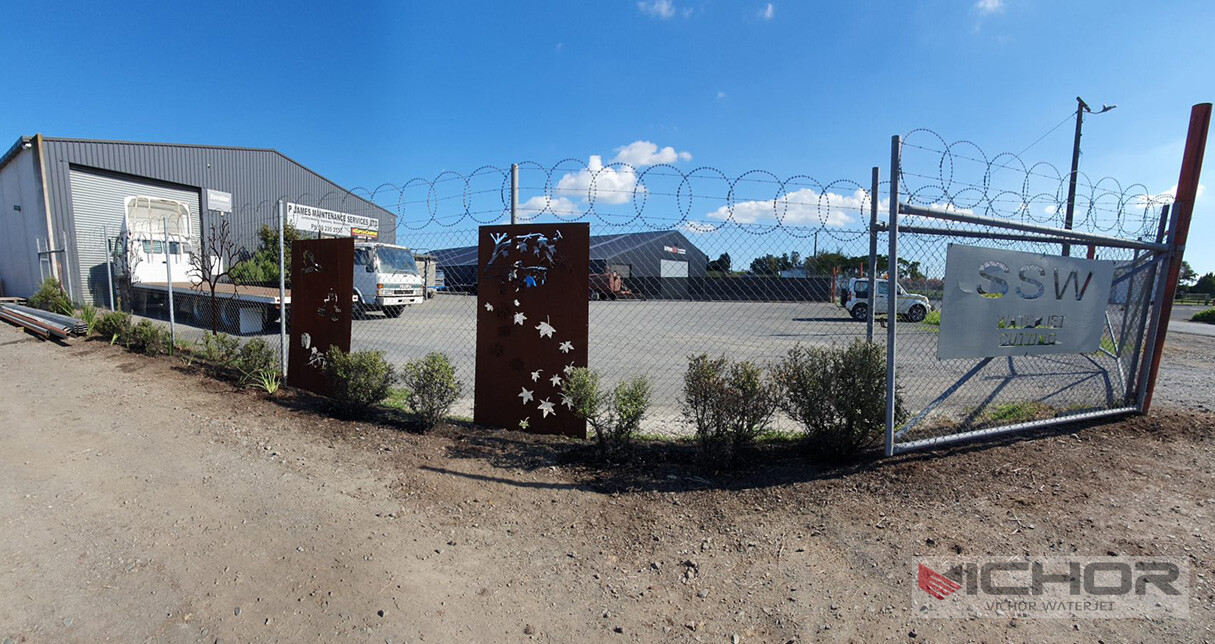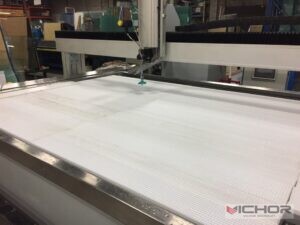
Top Ultra High Pressure Water Jetting Equipment for Sale: Your Ultimate Buyer's Guide
In the demanding world of industrial cleaning, surface preparation, and precision cutting, ultra high pressure water jetting equipment for sale represents the pinnacle of power and versatility. Operating at pressures typically exceeding 40,000 PSI (often reaching 60,000 PSI, 87,000 PSI, or even higher), this technology harnesses the incredible force of water – sometimes augmented with abrasives – to tackle jobs impossible for conventional methods. If you’re in the market for this transformative technology, understanding its nuances is crucial. This comprehensive guide explores the key aspects you need to consider when evaluating ultra high pressure water jetting equipment for sale.
1. Core Technology & Pressure Generation: The Heart of the System
At the core of any ultra high pressure water jetting equipment for sale lies the high-pressure pump. This is the engine that transforms ordinary water into a potent, focused stream capable of extraordinary feats. There are two primary pump technologies dominating the market:
Intensifier Pumps: These are the most common for ultra-high pressure applications. They work by using hydraulic oil pressure acting on a large piston to drive a smaller piston that pressurizes the water. This amplification effect efficiently generates the extreme pressures required. Intensifiers are known for their ability to deliver consistent pressure and flow, even under demanding conditions. They are robust and well-suited for continuous operation in industrial settings.
Direct Drive Pumps (Crankshaft/Cam-Driven): These pumps use an electric motor connected directly (often via a gearbox) to a crankshaft or cam arrangement that drives multiple plungers. Each plunger pressurizes water in its respective chamber. Direct drive pumps typically offer higher flow rates at ultra-high pressures compared to similarly sized intensifiers and can have faster pressure response times. They often feature fewer moving parts susceptible to hydraulic oil contamination.
Key Considerations for Pumps:
Maximum Pressure (PSI/Bar): The defining characteristic. Ensure it meets your application requirements (e.g., 40k, 55k, 87k PSI).
Flow Rate (GPM/LPM): Determines cleaning/cutting speed. Higher flow generally means faster work, but requires more power. Balance is key.
Power Source (HP/kW): Electric (3-phase common for industrial), diesel (for remote/mobile), or sometimes hydraulic. Matches pump output needs.
Durability & Reliability: Look for robust construction (e.g., ceramic plungers, hardened seats), proven designs, and reputable manufacturers.
Efficiency: Impacts operating costs (energy/water consumption).
Control & Monitoring: Modern pumps feature sophisticated controls for pressure adjustment, safety interlocks, and performance monitoring.
When browsing ultra high pressure water jetting equipment for sale, the pump specifications are the first and most critical element to scrutinize.
2. Versatile Applications: Where Ultra-High Pressure Excels
The power of ultra high pressure water jetting equipment for sale unlocks solutions across diverse industries. Understanding these applications helps pinpoint the right system specifications:
Industrial Cleaning:
Tank & Vessel Cleaning: Removes hardened residues, sludge, polymers, and coatings from chemical tanks, reactors, storage vessels, and railcars – often without confined space entry.
Heat Exchanger & Boiler Tube Cleaning: Efficiently decokes and removes scale, drastically improving thermal efficiency.
Pipeline Cleaning (Internal & External): Cleans interior deposits and prepares exterior surfaces for inspection or recoating.
Concrete Cleaning & Hydrodemolition: Removes damaged concrete (leaving rebar intact), cleans surfaces, and prepares for repairs with superior bonding.
Surface Preparation (Blasting): Pure water jetting (or with light abrasives) removes coatings, rust, mill scale, and contaminants to achieve near-white metal cleanliness (Sa 2.5/3) for optimal coating adhesion.
Precision Cutting (Abrasive Waterjet – AWJ):
Metal Fabrication: Cuts intricate shapes in metals (steel, titanium, aluminum, tool steel), composites, stone, glass, ceramics, and more, with no heat-affected zone (HAZ).
Dismantling & Decommissioning: Safely cuts through pipes, vessels, structures, and equipment, especially in explosive or sensitive environments.
Specialized Applications: Road marking removal, ship hull cleaning (often combined with recovery), nuclear decontamination, runway rubber removal, and more.
The specific ultra high pressure water jetting equipment for sale you need will be heavily dictated by your primary application(s).
3. Key Components Beyond the Pump: Building a Complete System
A functional ultra-high pressure system involves much more than just the pump. When evaluating ultra high pressure water jetting equipment for sale, pay close attention to these essential components:
High-Pressure Hoses: Specially constructed multi-layer hoses designed to withstand extreme, cyclic pressures and ensure operator safety. Flexibility and abrasion resistance are critical. Length impacts maneuverability and pressure drop.
Guns, Lances & Nozzles: The interface points where pressure is transformed into a usable jet. Options include:
Handheld Guns/Lances: For manual cleaning, often with trigger controls and various nozzle holders (fixed, rotary, fan jets).
Fixed/Remote Nozzles: For automated cleaning (tanks, tubes) or cutting heads on CNC machines.
Nozzles: Orifice size (governs pressure/flow), material (sapphire, diamond), and type (straight, fan, rotary, abrasive mixing) are crucial for performance and efficiency.
Abrasive Injection System (For Cutting/Blasting): Consists of an abrasive hopper, metering valve, delivery line, and abrasive cutting head. Precisely mixes dry abrasive (garnet common) into the high-pressure water stream for cutting power or aggressive blasting.
Water Supply & Filtration: Ultra-high pressure pumps demand clean water. Pre-filtration systems (often down to 5 microns or less) are essential to protect pump seals and valves from damage caused by particulates. Adequate flow and pressure at the inlet are mandatory.
Control Systems & Safety Features: Modern units feature:
PLC Controls: For automated operation, pressure regulation, monitoring parameters (pressure, flow, temp, hours).
Safety Interlocks: Pressure relief valves, burst discs, gun deadman switches, low water level cutoffs, and hose rupture detection systems are non-negotiable for operator and equipment safety.
Trailer/Skid Mounting: Determines portability. Skids are common for fixed installations or truck mounting. Trailers offer greater mobility for service contractors.
4. Critical Selection Criteria: Finding Your Perfect Match
With numerous options for ultra high pressure water jetting equipment for sale, making an informed decision requires careful evaluation:
Application Requirements: Be specific! What pressures and flows are needed? Pure water or abrasive? Continuous duty or intermittent? Manual operation or automation? This dictates pump type, HP, and accessories.
Pressure & Flow Needs: Match the pump’s capabilities precisely to your tasks. Over-specifying increases cost; under-specifying leads to poor performance. Consult application charts or manufacturers.
Mobility: Do you need a compact skid, a trailer-mounted unit, or a vehicle-integrated system? Consider site access.
Durability & Build Quality: Industrial environments are tough. Look for robust construction, high-quality components, and proven reliability from established brands. Check frame materials, component ratings, and protection features.
Ease of Maintenance: Downtime is costly. Consider accessibility for routine maintenance (filter changes, seal inspection), availability of spare parts, and technical support. Modular designs can be advantageous.
Safety Features: Never compromise. Verify comprehensive safety systems are integrated and meet relevant standards (e.g., OSHA, CE, ISO).
Control System Sophistication: Do you need basic manual controls or advanced automation with data logging and remote monitoring?
Vendor Reputation & Support: Choose a reputable supplier known for quality equipment, readily available spare parts, responsive technical support, and operator training. Consider proximity for service.
Total Cost of Ownership (TCO): Look beyond the purchase price. Factor in energy consumption, water usage, consumables (nozzles, seals, abrasives, filters), maintenance costs, expected lifespan, and potential downtime. Efficient, reliable systems often offer better long-term value.
New vs. Used: While new equipment offers warranties and latest tech, certified pre-owned ultra high pressure water jetting equipment for sale can be a cost-effective option if thoroughly inspected and refurbished by a reputable dealer.
5. Operation, Safety & Maintenance: Ensuring Longevity and Protecting Personnel
Operating ultra high pressure water jetting equipment demands the utmost respect for safety and disciplined maintenance practices:
Rigorous Operator Training: Mandatory! Operators must be thoroughly trained on:
System operation and controls.
Extreme hazard awareness (injection risk, noise, flying debris, slips).
Proper use of Personal Protective Equipment (PPE).
Safe hose handling and gun operation techniques.
Emergency procedures.
Essential Personal Protective Equipment (PPE): Non-negotiable minimums include:
Full-Body Waterproof Suit: Heavy-duty, multi-layered protection against high-pressure water penetration.
Safety Helmet with Face Shield & Hearing Protection: Guard against impact, debris, and extreme noise.
Steel-Toed, Slip-Resistant Waterproof Boots: With metatarsal guards.
Heavy-Duty Gloves: Designed for high-pressure water resistance.
Strict Safety Protocols:
Never point the jet at yourself or others.
Maintain safe distances from the jet stream.
Use hose whips/restraints to manage hose recoil.
Implement lockout/tagout procedures during maintenance.
Conduct pre-operational safety checks.
Be acutely aware of environmental hazards (confined spaces, slips, falls).
Proactive Maintenance Schedule: Adherence is critical for reliability and safety:
Daily: Check fluid levels (oil, fuel/coolant), inspect hoses for damage, test safety devices (deadman, relief valves), clean filters.
Weekly/Bi-Weekly: Check pump oil for contamination, inspect valve assemblies, inspect electrical connections.
Scheduled (Per Manufacturer Hours/Time): Change pump oil and filters, replace seals and valve components, inspect/replace high-pressure fittings, calibrate gauges, perform thorough system inspections. Follow the manufacturer’s maintenance manual meticulously.
Nozzle & Abrasive System Care: Inspect and replace worn nozzles (sapphire/diamond orifices), clean abrasive hoppers and lines to prevent clogging, ensure proper abrasive metering.
Water Quality Management: Consistently use the recommended level of water filtration and treatment to prevent premature wear and costly repairs.
Finding the right ultra high pressure water jetting equipment for sale is a significant investment that demands careful research and consideration. By thoroughly understanding the core technology, diverse applications, critical system components, essential selection criteria, and the paramount importance of safety and maintenance, you are well-equipped to make an informed decision.
Prioritize your specific application needs, demand robust build quality and comprehensive safety features, choose a reputable supplier offering strong support, and commit to rigorous operator training and disciplined maintenance. When selected and operated correctly, ultra high pressure water jetting equipment becomes an indispensable, highly efficient, and versatile asset, delivering exceptional results, improving productivity, and providing a strong return on investment across countless industrial and commercial challenges. Take the time to evaluate the options thoroughly – the power and precision you gain will be transformative.
continue reading



